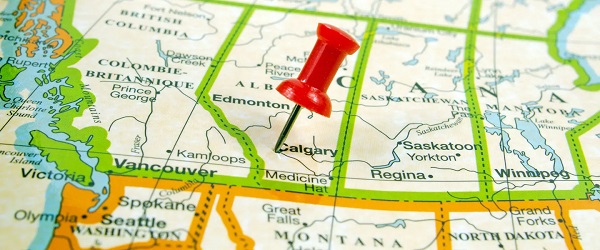Uncategorized
A year after Weinstein, Hollywood is still soul-searching

NEW YORK — After Rashida Jones exited Pixar’s “Toy Story 4” in 2017 she noted that the studio, after 25 years in business, had not made a single feature film directed by a woman, calling it “a culture where women and people of
So when Pixar co-founder and CEO John Lasseter stepped down earlier this year after acknowledging “missteps” in his
“These giant, multi-billion-dollar companies, they all need a makeover,” Jones now says. “And I think people are starting to recognize that. To me, that is a victory. Brave people have come forward and made this whole machine start to question itself.”
In the year since sexual assault allegations surfaced against Harvey Weinstein, Hollywood has been soul-searching. The Weinstein case — along with those of Kevin Spacey, CBS’ Les Moonves, Amazon Studios’ Roy Price and many others — laid bare the painful reality for countless women in a movie industry where gender inequality was systematic and pervasive.
The #MeToo movement has gone far beyond the movies, but Hollywood remains ground zero in a cultural eruption that began 12 months ago with the Weinstein revelations, published by The New York Times and The New Yorker. Through interviews with actresses, filmmakers, producers and others, The Associated Press sought to assess whether it is a palpably different place today than a year ago.
“Definitely there’s been a seismic shift,” says Carey Mulligan, the British actress. “I feel like if I was walking down the street and someone said something or did something outside the bounds of appropriate, I would feel so much more empowered to tell them to f— off while before I probably wouldn’t. Those sort of
Mulligan, who played an early 20th century women’s rights activist in 2015’s “Suffragette” and has herself been vocal about Hollywood’s pay gap, says that in every job she’s had for the last year, there’s been a well-known code of conduct on set. She’s optimistic that more change is coming.
Researchers at the University of Southern California’s Annenberg Inclusion Initiative have not yet found any marked difference in female representation on screen, behind the camera or in the boardroom. More data after the end of the year will give a clearer picture of 2018, but the previous 20 years have shown almost zero change. At least anecdotally, studios and production companies are more aggressively hunting for female filmmakers. Salma Hayek has said her production company has been struggling to find female writers and directors. They’re all already booked.
“Everybody’s looking for their female content,” says Jones, whose documentary “Quincy” was recently released by Netflix. “They’re starting to understand that content that’s created by and shepherded by women and people of
Measuring cultural change in a far-flung, $50 billion industry is difficult. Many of the epicenters of the movie business — red carpets, film festivals, award shows — have struck a different tone in the wake of Weinstein. While “who are you wearing” has steadily crept back into the red-carpet lexicon a year after women wore black to the Golden Globes, protest has engulfed many of the frothiest events on the movie calendar, from the Oscars to the Cannes Film Festival .
But some see a limit to what such demonstrations can accomplish.
“It’s a great thing when you’re on the red carpet and people are talking about sexual assault. At least it’s out in the open,” says actress Viola Davis. “My fear is that people feel like the focus of sexual assault is just on actresses in Hollywood and studio execs like Weinstein.”
She worries about the movement becoming limited to “outing the men, putting them in the court of public opinion and just destroying their careers. It’s way bigger than that. One out of every 4 women — and there’s some statistics that say it’s 1 out of 3 — will be sexually assaulted by the time they’re 18.”
Like many revolutions before it, #MeToo has sought to codify permanent changes. The Academy of Motion Picture Arts and Sciences instituted a code of conduct and booted not only Weinstein but Bill Cosby and Roman Polanski.
In addition, “inclusion riders” — contractual agreements to try to hire diverse casts and crews — have proliferated. Last month, Warner Bros. became the first major studio to make a similar pledge. Many prominent film festival directors have also signed agreements to push their executive boards to gender parity.
In an attempt to abolish the “casting couch” culture that Weinstein allegedly exploited, The Screen Actors Guild created guidelines — supported by the producers’ guild — instructing producers and executives to refrain from holding professional meetings in hotel rooms and homes. It urged members not to agree to meetings in “high-risk locations.”
“People have been talking for decades about how terrible the casting coach is. Even with that knowledge, it was still going on. There was nothing concrete, written down saying: unacceptable,” says Gabrielle Carteris, president of SAG-AFTRA. “Us putting that in a guideline was so empowering for members because we’ve all been put in that situation. And I really want to salute the studios because we did it really in partnership with them.”
The guidelines will soon be expanded to establish rules around nudity on set.
“The kind of work we do is so intimate. It’s different than being a lawyer or a doctor or a dentist,” Carteris says. “But there are rules for workers in this country, and it was really important to define what those rules are.”
The movie business still lacks a single, industry-wide reporting system for sexual harassment and assault, though a committee led by Anita Hill is working to create one. Time’s Up , which is spearheading much of the pressure put on Hollywood, has also amassed a $21 million legal-
Yet with everything that has happened in the last year, most observers say not nearly enough has been done to address long-term inequalities in Hollywood.
“It feels like we’re moving in the right direction, but women and minorities are such a tiny percentage of this industry,” says filmmaker Nicole Holofcener, whose latest is “The Land of Steady Habits.” ”I open up my Director’s Guild magazine, and it has films that the DGA is screening and sometimes there’s not one woman, not one black person. They are all white male directors and my jaw is on the floor. I think: How can this still be?”
Holofcener has mixed feelings about all the attention on gender.
“It’s a good thing to highlight our work, but I wish we didn’t have to,” she says.
Julia Roberts, who was once among the highest paid movie stars, agrees.
“Every year that it’s ‘the year of the woman,’ let’s just have it always be the year of the artists,” Roberts says. “If we have to keep spotlighting the gender of this and the gender of that, we’re kind of blowing it.”
There are plenty of others in Hollywood who have misgivings about #MeToo. Sean Penn derided what he called the movement’s “salacious” quality, saying its spirit is “to divide men and women.”
But as the recent re-editing of “The Predator” showed, some
Kirsten Schaffer, executive director of the advocacy group Women in Film , believes that the path to ending harassment is through parity. Evidence backs her up.
“The more women we have in leadership positions, the less likely the incidents of harassment. So we have a lot of work to do on that front,” Schaffer says.
“We’ve been living in a sexist, racist society for hundreds of thousands of years,” she adds. “We’re not going to undo it in a year.”
___
Follow AP Film Writer Jake Coyle on Twitter at: http://twitter.com/jakecoyleAP .
Jake Coyle, The Associated Press
Uncategorized
Mortgaging Canada’s energy future — the hidden costs of the Carney-Smith pipeline deal


Much of the commentary on the Carney-Smith pipeline Memorandum of Understanding (MOU) has focused on the question of whether or not the proposed pipeline will ever get built.
That’s an important topic, and one that deserves to be examined — whether, as John Robson, of the indispensable Climate Discussion Nexus, predicted, “opposition from the government of British Columbia and aboriginal groups, and the skittishness of the oil industry about investing in a major project in Canada, will kill [the pipeline] dead.”
But I’m going to ask a different question: Would it even be worth building this pipeline on the terms Ottawa is forcing on Alberta? If you squint, the MOU might look like a victory on paper. Ottawa suspends the oil and gas emissions cap, proposes an exemption from the West Coast tanker ban, and lays the groundwork for the construction of one (though only one) million barrels per day pipeline to tidewater.
But in return, Alberta must agree to jack its industrial carbon tax up from $95 to $130 per tonne at a minimum, while committing to tens of billions in carbon capture, utilization, and storage (CCUS) spending, including the $16.5 billion Pathways Alliance megaproject.
Here’s the part none of the project’s boosters seem to want to mention: those concessions will make the production of Canadian hydrocarbon energy significantly more expensive.
As economist Jack Mintz has explained, the industrial carbon tax hike alone adds more than $5 USD per barrel of Canadian crude to marginal production costs — the costs that matter when companies decide whether to invest in new production. Layer on the CCUS requirements and you get another $1.20–$3 per barrel for mining projects and $3.60–$4.80 for steam-assisted operations.
While roughly 62% of the capital cost of carbon capture is to be covered by taxpayers — another problem with the agreement, I might add — the remainder is covered by the industry, and thus, eventually, consumers.
Total damage: somewhere between $6.40 and $10 US per barrel. Perhaps more.
“Ultimately,” the Fraser Institute explains, “this will widen the competitiveness gap between Alberta and many other jurisdictions, such as the United States,” that don’t hamstring their energy producers in this way. Producers in Texas and Oklahoma, not to mention Saudi Arabia, Venezuela, or Russia, aren’t paying a dime in equivalent carbon taxes or mandatory CCUS bills. They’re not so masochistic.
American refiners won’t pay a “low-carbon premium” for Canadian crude. They’ll just buy cheaper oil or ramp up their own production.
In short, a shiny new pipe is worthless if the extra cost makes barrels of our oil so expensive that no one will want them.
And that doesn’t even touch on the problem for the domestic market, where the higher production cost will be passed onto Canadian consumers in the form of higher gas and diesel prices, home heating costs, and an elevated cost of everyday goods, like groceries.
Either way, Canadians lose.
So, concludes Mintz, “The big problem for a new oil pipeline isn’t getting BC or First Nation acceptance. Rather, it’s smothering the industry’s competitiveness by layering on carbon pricing and decarbonization costs that most competing countries don’t charge.” Meanwhile, lurking underneath this whole discussion is the MOU’s ultimate Achilles’ heel: net-zero.
The MOU proudly declares that “Canada and Alberta remain committed to achieving Net-Zero greenhouse gas emissions by 2050.” As Vaclav Smil documented in a recent study of Net-Zero, global fossil-fuel use has risen 55% since the 1997 Kyoto agreement, despite trillions spent on subsidies and regulations. Fossil fuels still supply 82% of the world’s energy.
With these numbers in mind, the idea that Canada can unilaterally decarbonize its largest export industry in 25 years is delusional.
This deal doesn’t secure Canada’s energy future. It mortgages it. We are trading market access for self-inflicted costs that will shrink production, scare off capital, and cut into the profitability of any potential pipeline. Affordable energy, good jobs, and national prosperity shouldn’t require surrendering to net-zero fantasy.If Ottawa were serious about making Canada an energy superpower, it would scrap the anti-resource laws outright, kill the carbon taxes, and let our world-class oil and gas compete on merit. Instead, we’ve been handed a backroom MOU which, for the cost of one pipeline — if that! — guarantees higher costs today and smothers the industry that is the backbone of the Canadian economy.
This MOU isn’t salvation. It’s a prescription for Canadian decline.
Uncategorized
Cost of bureaucracy balloons 80 per cent in 10 years: Public Accounts

The cost of the bureaucracy increased by $6 billion last year, according to newly released numbers in Public Accounts disclosures. The Canadian Taxpayers Federation is calling on Prime Minister Mark Carney to immediately shrink the bureaucracy.
“The Public Accounts show the cost of the federal bureaucracy is out of control,” said Franco Terrazzano, CTF Federal Director. “Tinkering around the edges won’t cut it, Carney needs to take urgent action to shrink the bloated federal bureaucracy.”
The federal bureaucracy cost taxpayers $71.4 billion in 2024-25, according to the Public Accounts. The cost of the federal bureaucracy increased by $6 billion, or more than nine per cent, over the last year.
The federal bureaucracy cost taxpayers $39.6 billion in 2015-16, according to the Public Accounts. That means the cost of the federal bureaucracy increased 80 per cent over the last 10 years. The government added 99,000 extra bureaucrats between 2015-16 and 2024-25.
Half of Canadians say federal services have gotten worse since 2016, despite the massive increase in the federal bureaucracy, according to a Leger poll.
Not only has the size of the bureaucracy increased, the cost of consultants, contractors and outsourcing has increased as well. The government spent $23.1 billion on “professional and special services” last year, according to the Public Accounts. That’s an 11 per cent increase over the previous year. The government’s spending on professional and special services more than doubled since 2015-16.
“Taxpayers should not be paying way more for in-house government bureaucrats and way more for outside help,” Terrazzano said. “Mere promises to find minor savings in the federal bureaucracy won’t fix Canada’s finances.
“Taxpayers need Carney to take urgent action and significantly cut the number of bureaucrats now.”
Table: Cost of bureaucracy and professional and special services, Public Accounts
| Year | Bureaucracy | Professional and special services |
|
$71,369,677,000 |
$23,145,218,000 |
|
|
$65,326,643,000 |
$20,771,477,000 |
|
|
$56,467,851,000 |
$18,591,373,000 |
|
|
$60,676,243,000 |
$17,511,078,000 |
|
|
$52,984,272,000 |
$14,720,455,000 |
|
|
$46,349,166,000 |
$13,334,341,000 |
|
|
$46,131,628,000 |
$12,940,395,000 |
|
|
$45,262,821,000 |
$12,950,619,000 |
|
|
$38,909,594,000 |
$11,910,257,000 |
|
|
$39,616,656,000 |
$11,082,974,000 |
-

 Uncategorized2 days ago
Uncategorized2 days agoMortgaging Canada’s energy future — the hidden costs of the Carney-Smith pipeline deal
-

 International2 days ago
International2 days agoAustralian PM booed at Bondi vigil as crowd screams “shame!”
-

 Automotive1 day ago
Automotive1 day agoCanada’s EV gamble is starting to backfire
-

 Agriculture1 day ago
Agriculture1 day agoEnd Supply Management—For the Sake of Canadian Consumers
-

 Alberta1 day ago
Alberta1 day agoAlberta Next Panel calls to reform how Canada works
-

 Agriculture6 hours ago
Agriculture6 hours agoThe Climate Argument Against Livestock Doesn’t Add Up
-

 Environment1 day ago
Environment1 day agoCanada’s river water quality strong overall although some localized issues persist
-

 Digital ID18 hours ago
Digital ID18 hours agoCanadian government launches trial version of digital ID for certain licenses, permits










